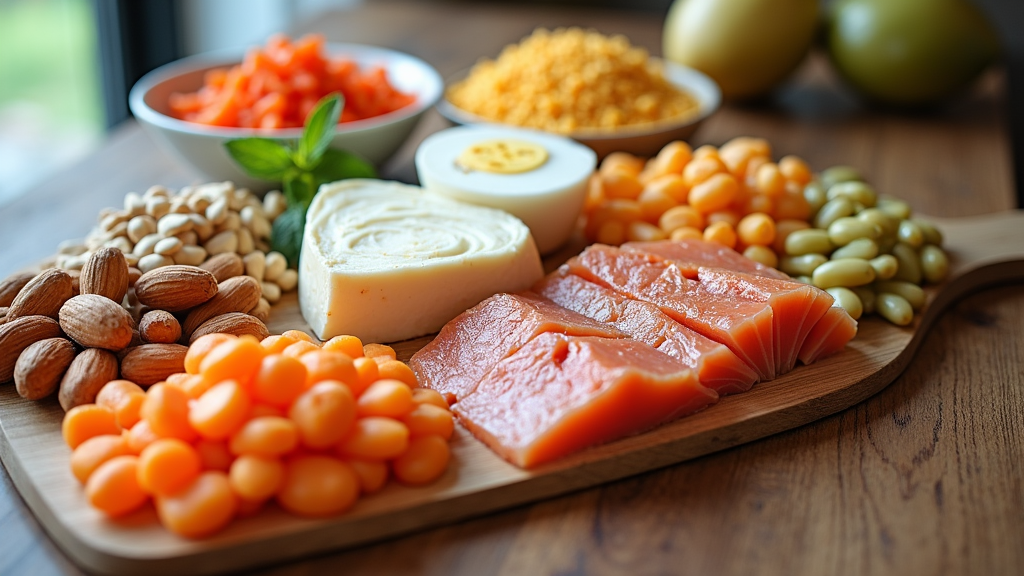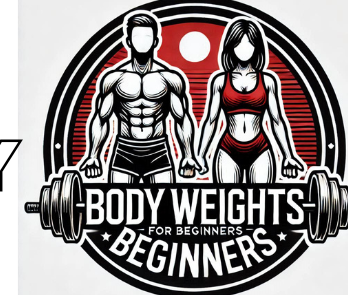Understanding protein needs plays an important role in health and fitness, especially for beginners. Protein is often seen as a building block for muscles, but it also supports many other functions in the body. In this article, I will explain the basics of protein, why it matters, and how beginners can start to determine their own protein requirements.

Why Protein Matters for Your Body
Protein is an essential nutrient that all organisms rely on to function properly. It plays a significant role in building muscles, repairing tissues, and producing enzymes and hormones. Even if you are not an athlete, protein helps maintain overall health by supporting your immune system and ensuring that your body can recover from everyday stress. Many people often wonder how much protein they really need. The answer varies according to factors like age, activity level, and overall health. What remains consistent, however, is the importance of incorporating protein into your diet as one of your key macronutrients. For beginners, understanding protein requirements means learning to balance meals according to lifestyle and bodily needs.
Knowing what protein does for your body is a useful first step toward making informed choices about your diet. It provides the necessary blueprint for building tissues and can even affect your energy levels throughout the day.
💪 Struggling to Get Enough Protein?
👉 Try These Beginner-Friendly Protein Powders!
🔗 Shop Now on Amazon
Essential Information for Building a Protein-Rich Diet
Nutrition covers a wide range of topics, but when it comes to protein, a few key ideas are easy to remember. First, proteins contain amino acids, the pieces needed by the body to repair and build tissues. There are 20 different amino acids; some the body can produce on its own while others must come from food sources. For beginners, a helpful approach is to mix both animal and plant proteins in your meals. This balanced intake ensures you get a variety of amino acids. Consider these important points:
- Complete Proteins: These include all nine essential amino acids that your body cannot make on its own. Common sources are meat, dairy, eggs, and some plant foods such as quinoa.
- Incomplete Proteins: Foods like beans, lentils, and other legumes may not have every essential amino acid. However, combining them with other protein sources can create a complete profile.
- Protein Quality: The quality of protein is often measured by its digestibility and amino acid profile. High-quality proteins help your body repair and build tissues more effectively.
Keeping these points in mind enables you to make more informed decisions about distributing protein sources and aiming for a rich, balanced diet.
Getting Started with Understanding Protein Intake
Before you shake up your eating routine, it helps to understand how protein functions in your body. Begin by familiarizing yourself with the basic science of protein metabolism. Proteins are broken down into amino acids, which then enter the bloodstream to help restore tissues damaged from workouts or daily stress. It is useful for beginners to read nutrition labels and learn to estimate protein content in common foods. Many online tools and apps can track protein intake, making it simpler when you are just starting out. The key is to notice patterns in your eating behavior and then adjust to create a better balance based on your lifestyle.
While there isn’t a one-size-fits-all number for protein, a common guideline is to consume around 0.8 grams per kilogram of body weight. More active individuals or those looking to build muscle may increase that amount to between 1.2 and 2.0 grams per kilogram. Experiment with these guidelines and adjust based on how your body responds to find your personalized needs.
Step-by-Step Guide to Meeting Your Protein Needs
If you are new to balancing macronutrients, breaking the process down into smaller steps can help. Here are some practical tips:
- Assess Your Current Diet: Start by keeping a food diary for a few days. This helps you see how much protein you are eating and spot any gaps.
- Set Realistic Goals: Based on your findings, decide if you need to increase your protein. Setting small, realistic changes can help you stick with the plan.
- Choose a Variety of Protein Sources: Include both complete and incomplete proteins from foods like lean meats, dairy, beans, and nuts to boost your nutritional intake.
- Plan Meals Around Protein: Create a meal plan that includes protein at every major meal. A consistent approach ensures you regularly meet your daily goal.
- Monitor Your Energy Levels: As you tweak your diet, note how you feel. Increased stamina and improved recovery may signal that your protein intake is on track.
Following these steps provides a clearer picture of your protein needs, making it easier to design a diet that supports both muscle repair and overall health.
Important Considerations Before Changing Your Protein Intake
Before making changes to your protein consumption, consider some practical challenges. Adjusting your diet isn’t just about adding or cutting foods—it involves understanding how these changes affect your body and lifestyle. For instance, a sudden jump in protein can lead to digestive issues, so it’s wise to increase protein slowly. Also, changing one part of your diet influences others, so be sure you continue to get enough carbohydrates and fats, which carry essential vitamins and provide energy.
- Digestive Sensitivity: A quick increase in protein may cause digestive discomfort. Ease into a higher-protein diet gradually, and consider adding fiber-rich foods to help your body adjust.
- Balancing Other Nutrients: Focus on maintaining a balance. Relying too heavily on protein might cause you to miss out on other nutrients vital for keeping up your energy levels.
- Sources and Availability: Not all protein sources are available everywhere. In some regions, fresh meat and dairy might be scarce or expensive, so incorporating plant-based proteins like beans, lentils, and tofu can be a smart alternative.
- Budget Considerations: A protein-rich diet might seem expensive, but shopping smart—buying in bulk or choosing affordable options like eggs and legumes—can ease budget constraints.
Digestive Sensitivity
If your protein intake increases suddenly, your body may need time to adjust. A gradual approach and pairing protein with fiber can help smooth the transition.
🍫 Need a Quick & Tasty Protein Boost?
✅ Grab These High-Protein Snacks Today!
🔗 See Best-Sellers Now
Balancing Other Nutrients
A diet focused solely on protein may leave gaps in other essential nutrients. A well-rounded plan includes carbohydrates, fats, vitamins, and minerals, which all work together to support good health.
Sources and Availability
Availability varies by region. In areas where animal-based sources are limited, plant proteins can effectively cover your amino acid needs when combined properly.
Budget Considerations
Cost can be a factor, but planning ahead and choosing budget-friendly options helps you maintain a protein-rich diet without overspending.
Advanced Tips for Fine-Tuning Protein Intake
Once you have a good understanding of your protein needs, there are several advanced tips you can consider to make your diet even more effective. For example, keeping a detailed log of your meals and physical responses can help you pinpoint adjustments. Over time, you may notice patterns that indicate whether you are under- or over-consuming protein.
Another useful tip is varying your protein sources. Relying on just one form of protein can get monotonous. Instead, mix animal-based with plant-based proteins to get a full range of amino acids. Also, consider the timing of your protein intake; consuming protein soon after physical activity can help repair muscles and boost recovery. Finally, experiment with how often you eat. Some people do better with several small meals, while others prefer a few larger ones. Finding a pattern that works for you can help manage hunger and energy levels more smoothly.
The Basics: What Should Beginners Focus on?
For those starting out, focusing on a few core principles is key. Building a balanced diet around high-quality protein sources supports energy levels, muscle repair, and overall bodily functions. Organize your meals around foods rich in protein, such as lean meats, dairy alternatives, beans, nuts, seeds, and whole grains. For example, consider a bowl of oatmeal with nuts and seeds in the morning or a mixed bean salad at lunch. These simple choices add up over time without being complicated.
🍳 Make Meal Prep Easy & Stress-Free!
🥤 Get the Best Kitchen Tools for Hitting Your Protein Goals!
🔗 Shop Now
Using tools like food trackers can help you check if you’re meeting your personal protein goals without requiring complicated math. The process of stumbling upon your ideal protein intake is an investment in your long-term health; it takes time, experimentation, and occasional adjustments.
- Simplicity: Rely on naturally occurring protein sources rather than immediately resorting to supplements.
- Variety: Mix up different types of protein-rich foods to keep your meals interesting.
- Moderation: More protein is not always better. Balancing with other nutrients is really important for overall well-being.
Even though the idea might seem overwhelming at first, many beginners find that small, manageable adjustments lead to steady progress. A simple approach can help form lasting healthy eating habits.
📘 Confused About What to Eat?
🔥 Get a Simple Meal Plan to Hit Your Protein Goals Effortlessly!
🔗 Download Now
Frequently Asked Questions
Below are answers to some common questions beginners have when learning about protein needs:
Question: How do I know if I’m getting enough protein?
Answer: Monitor your energy, strength, and recovery after exercise. Food tracking apps also provide insights into your daily consumption.
Question: What are the best sources of protein for beginners?
Answer: A mix of lean meats, dairy products, beans, legumes, and plant-based proteins like tofu delivers a full range of amino acids.
Question: Can I rely solely on supplements for protein?
Answer: While supplements can be useful for higher protein needs, whole foods also provide additional vitamins, minerals, and fiber.
Question: What should I do if I experience digestive issues after increasing my protein intake?
Answer: Introduce protein gradually and couple it with fiber-rich foods. If issues continue, consult a nutrition expert for advice.
Wrapping Up
Understanding protein needs is a pathway to a healthier lifestyle. By breaking down what protein does, starting with small changes, and eventually fine-tuning your diet, beginners can improve their daily energy and overall health. Remember that everyone’s protein requirements are personal. Research, monitoring how your body reacts, and applying practical guidance can help you figure out the right balance for you.
Experiment with different protein sources and adjust your diet steadily. The process of stumbling upon your ideal protein intake is not just about counting grams; it is about making smart, consistent nutritional choices. With persistence and a willingness to adjust as needed, you will likely notice improvements in muscle tone, recovery, and sustained energy throughout your day.
🎯 Ready to Build Muscle & Stay Healthy?
💪 Fuel Your Fitness Journey with the Right Protein Supplements!
🔗 Shop Top Protein Picks Now
